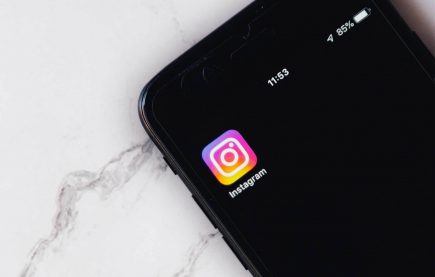
12 Proven Marketing Tactics for Increasing Brand Loyalty
Brand loyalty drives growth. Whether you’re a small B2C popcorn shop or a leading B2B company, building brand loyalty is a surefire way to retain more customers and thrive in the industry. Because guess what? 80% of your sales come from 20% of your existing loyal customers.
But, the question: How can you increase brand loyalty?
That’s exactly what we’ll cover today. Keep reading to discover 12 marketing techniques for increasing brand loyalty, backed by research.
1. Provide Unbeatable Value Consistently
Your marketing messages must be based on more than just “selling” and promoting your brand. You should provide incredible value with your content.
Give what your customers want to read, experience, and have. When you give them exactly what they want, they’ll keep coming back for more.
In the most basic sense, ask less and give more.
Steve Elliott, franchise owner of Restoration 1, says, “We often find ourselves trying to focus on big things or end goals while neglecting to give attention to the most basic and essential things. One of these things that could fall between the cracks is conducting exhaustive and in-depth research about the client or potential customers/target audience.”
He further advises, “If you do a good job with the research, it will be much easier to work for them and have a clear brand marketing plan. Advertising can also be helpful, but nothing will work as planned if your strategies are off-target.”
2. Never, Ever Spam Your Customers
Think about your spam folder. Do you care about those emails? I bet you rarely even check them. How would you like it if a brand sent you three or four marketing messages a day? You might unsubscribe immediately.
Your customers are exactly the same. Nearly 85% of emails are spam, according to DataProt’s 2022’s spam report. And the spam folder is costing businesses billions of dollars every year.
Eric McGee, Senior Network Engineer at TRG Datacenters, says, “Instead of spamming their email inboxes or sending cold emails that only shout ‘me, me,’ do the opposite.”
He added, “Ask for their permission. Help them genuinely. Send them marketing messages that inspire, deliver knowledge, and provide an experience.”
3. Make Your Customers Feel Heard
Your customers want to be heard. They want to interact with your brand. That’s why they leave comments on your ads, leave reviews, or might even write you letters.
Never ignore them. Respond to them. Welcome their feedback and suggestions.
“With exceptional customer support, you open the window to so many good things, and one of them is of course brand loyalty,” says Andrew Priobrazhenskyi, CEO of DiscountReactor.
4. Make Your Marketing Personal to Your Customers
This is a brand-rich era. Until and unless your marketing efforts relate to your customers on a personal level, you’re at high risk of being forgotten—let alone building your brand loyalty. As a matter of fact, customers already expect you to create personalized experiences for them.
74% of customers reported feeling frustrated when visiting impersonalized websites. Think about it. If they don’t feel your content resonates with them, how will they become your customers for life?
So, craft your marketing strategies around their pain points, struggles, desires, emotions, fears, and everything related to them. Dig deeper with your data. Segment your customer personas. Send separate personalized product recommendations and other marketing messages. That way, they can always feel connected and understood, increasing their loyalty to your brand.
Kathryn Smithson, Chief Marketing Officer (CMO) at Path Social, says, “Adding a personal touch to our service is another way we bring in new clients. We must provide content that is specially personalized to the demands of our market.”
She added, “Understanding the issues and challenges that our clients face enables us to produce content that gives practical solutions and supports the growth of our customers’ trust and credibility.”
Look at one of the most successful personalized marketing campaigns, “Share a Coke.” By putting their customers’ names on their product, Coca-Cola stole the attention of more people—providing a whole new experience than just a soft drink.

Image Source: Coca-Cola
5. Don’t Just Show It. Do It!
Sure, you can make outsized claims that you’re “great” at customer service, you “value your employees,” and you “value customers’ feedback”… but what’s your in-house experience? What’s your in-store experience? What does it really feel like behind the scenes? Are your employees satisfied with what you promise in your marketing and what you offer?
Importantly, is there any contradiction between what’s being said and what’s being done? If so, that can leave a stain on your company’s name.
Make sure your in-house, in-store, and behind-the-curtain experience aligns with the image you portray online.
6. Keep Providing Outstanding Products or Services
This is the center of everything you do. (That’s why it’s numbered #6 among 12 tactics… clever.) Think about why brands win trust and loyalty. Apple? Nike? Starbucks? McDonald’s?
Because they provide great products. They never fail their customers. They always exceed expectations. That’s why billions of people will stay loyal to these brands—probably for their lifetime.
Lachlan de Crespigny, co-CEO of Revelo, says, “Providing outstanding quality with your product is at the core of everything if you’re looking to build brand loyalty.”
7. Fulfill Promises
“When customers invest their hard-earned money in you based on your promises that you’ll solve their problems—they’re trusting you. If you break that chain of trust, you’ll fail at building your brand loyalty,” says Gerrid Smith, CMO of Joy Organics.
Make sure you deliver what you promise in your marketing. Even better, stand by your products or services by providing guarantees.
8. Trigger Their Emotional Brain
“People respond more to things that emotionally appeal to them—and that’s exactly what you need to do in your marketing. Make your customers feel like you care for them and you’re always there for them,” says Abdul Saboor from The Stock Dork.
In fact, a study discovered that customers who are emotionally connected to a brand have a 306% higher lifetime value. Plus, there’s a 71% chance they’ll recommend that company to their closed ones.
Think of Apple, the biggest example in the marketing world that did this masterfully. Another example is P&G’s “Thank You, Mom—Strong” emotional campaign that highlights the importance of mothers in our society.

9. Never Leave Them Alone on Special Occasions
According to Alex Savy, Co-Founder and Editor-in-Chief of Comfynorth, “Get involved in birthdays, anniversaries, and relevant occasions that are important to your customers. Even a simple birthday wish can increase your brand’s loyalty by a percentage.”
An interesting study discovered that 74% of customers feel positive about brands who wish them happy birthday—and of that group, 84% increased brand loyalty.
Bonobos, the clothing brand, does that effectively. No sellouts. No discount codes or promotions. Just simple, personalized birthday wishes to their subscribers.

10. Stand for a Big Cause
Stand for something: a social issue or an environmental cause. Making your brand cause-driven can earn you more loyal fans. Martin Lassen, founder and CEO of Grammarhow, says, “People stay loyal to brands because of their values, because of what brands stand for.” Those values bring unique experiences, feelings of pride, and a sense of association. People feel connected to brands that speak for the causes they stand for. Their support for such brands is exceptional.
So, ensure you’re standing for something. But don’t just put that cause in your company values, mission, or vision statement and forget about it. You’re going to bring it up, live up for it, and provide experiences related to it.
In fact, a recent study revealed that 66% of customers expect brands to stand for or speak on social and political issues.
One recent example is Squarespace speaking in favor of LGBQT+ communities, and they posted about it on Instagram.




